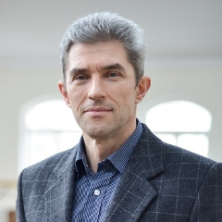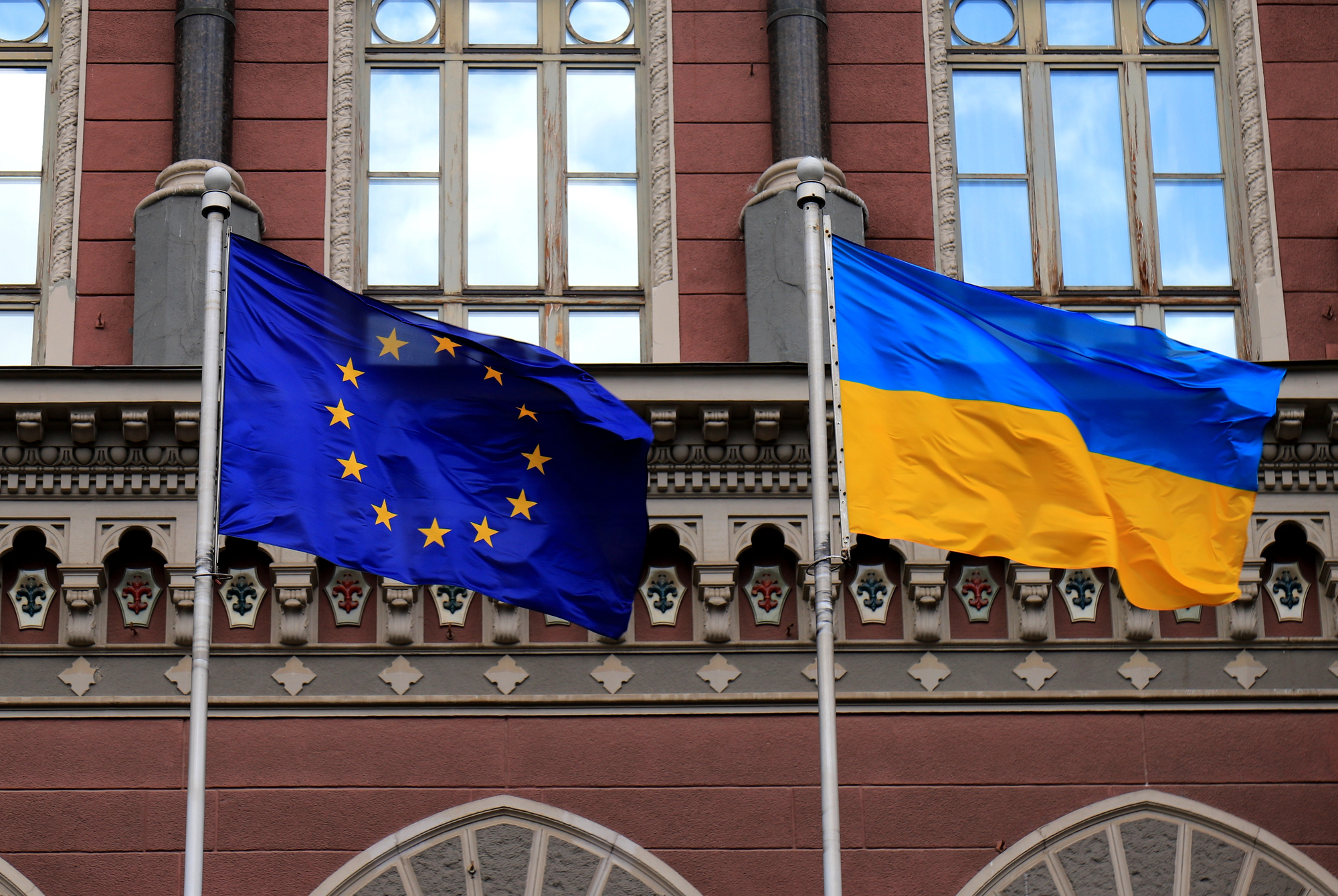As the March 31 Ukrainian presidential elections approach, warfare continues in the east, and national reforms falter, analysts warn about the resurgence of old – and the emergence of new – authoritarian threats in Ukraine. On the one hand, they argue that the ongoing war with Russia is used by the Poroshenko regime to strengthen its hold on power and encroach on citizens’ civil rights and freedoms.
Firstly published at PONARS Eurasia
Every time the incumbent president runs for reelection, the threat of authoritarianism, this argument posits, arises from the presidency itself. On the other hand, “right wing nationalist trends” are allegedly tolerated by the government, an indifference that jeopardizes further democratization. While the post-revolutionary turbulence in Ukraine continues, others fear that society may wish for a strong hand, a leader capable of bringing peace and order, which may ultimately lead to some sort of authoritarianism. While acknowledging the various tangible pressures and challenges, this memo nonetheless argues that modern authoritarianism, in contrast to many post-Soviet states, is hardly possible in Ukraine. Three groups of structural, institutional, and agency-based factors make the emergence of an authoritarian regime in Ukraine highly improbable.
Authoritarianism as a Socio-Political Construct
Drawing on classical and modern studies of authoritarianism, the term is understood here as a sociopolitical construct, or a syndrome, where submission to authority is underpinned by a combination of people’s toleration of it, the leader’s charisma, and the state’s coercive apparatus. Authoritarianism is not just unaccountable use of power by a leader or political party. It usually consists of (a) an institutionalized monopoly on power that prevents any challenger from contesting the ruler by legal or extralegal means and (b) some minimal degree of public consent, which at times can grow into broad public support for a ruler—making for a highly desired “unity” between leader and people. Although the sources of authoritarian legitimacy as well as legitimation strategies vary, this perceived “unity” is a necessary condition for any stable authoritarianist regime.
Other features of authoritarianism such as limited political pluralism, minimal social mobilization, and vaguely defined limits on executive power are important, but the key is the mechanism employed by the single or collective ruler to achieve “unity” with the people. When the people voluntarily accept the power of the authority, a fully authoritarian (consolidated) regime is possible. This maximalist formula is suggested here in order to analytically dissect a fully authoritarian regime from its diminished forms such as “semi,” “competitive,” or “electoral” authoritarianism that often fall under the category of “hybrid regime.”
Three groups of factors (see Table 1), when taken together, form a barrier against the emergence of a fully authoritarian regime in present-day Ukraine: The main factors within the structural, institutional, and agency-based groupings are: poor leadership legitimacy, poor economic performance, regional polarization, weak state repressive capacity, the relative weakness of the party of power, fragmented elite structure, growing linkage with the West, semi-presidentialism, legacy of a hybrid regime, lack of charismatic leadership, largely pro-democratic public attitudes, and the gravity of three major waves of anti-authoritarian protest (in 1990, 2004, and 2014).
Structural Constraints
I begin with the key factor: legitimacy and the mechanism (legitimation) that helps to achieve a desired “unity” between leader and people. While legitimacy is a belief in a righteous political order, legitimation is a process of gaining support. Legitimacy is expressed in both the confidence in a leader and the government institutions empitomized by the leadership. As Christian von Soest and Julia Grauvogel at the GIGA Institute in Germany observe, claims to legitimacy can be input-based (foundational myths, ideology, personalism) or output-based (performance). When claims to legitimacy are met and supported, legitimation can be considered successful.
First, since the beginning of independence, Ukrainians have demonstrated very low trust in the main state institutions (presidency, government, parliament) as well as in the personalities populating those institutions. Attempts to bridge this gap through various legitimation strategies (mostly procedures and performance) have not been successful. Especially detrimental for Ukrainian legitimacy has been poor economic performance. Since independence, Ukraine’s GDP has contracted by one third, from $188 billion in 1991 to $124 billion in 2016. In such unfortunate conditions, support for the president has averaged 14 percent (2000-2015, with 4 different presidents), while support for the parliament and the cabinet has been under 10 percent (6.5 and 9.6 respectively). As of June 2018, less than 14 percent of Ukrainians exhibited trust in the incumbent, President Petro Poroshenko, while more than 80 percent affirmed a lack of trust in him (as opposed to being neutral or unsure). Overall, the stability of Poroshenko’s regime, as reflected in public attitudes regarding his third year in power, appeared to be lower than that of Viktor Yanukovych, the former, ousted president, at the same point in his presidential tenure. At present, with about a month left before the presidential election, only Volodymyr Zelensky, a screenwriter and actor who has never been in politics, seems to have a positive balance of trust vs. distrust. The point is that “unity” between the ruling elite and the citizenry clearly does not happen in Ukraine, making it dissimilar to Vladimir Putin’s Russia, Aleksandr Lukashenka’s Belarus, Viktor Orban’s Hungary, and Jarosław Kaczynski’s Poland.
Second, autocrats face serious constraints in consolidating their power in regionally and culturally divided societies. For instance, Yanukovych was elected by votes coming mostly from the southeast of Ukraine and he faced serious opposition in the west and center. Although President Putin’s war against Ukraine brought about a growing sense of national unity, the Kremlin has some room for maneuver and is once again playing ethno-linguistic cards in the run–up to the election (and forthcoming parliamentary elections in October). Take for example oligarch Viktor Medvedchuk, whose views on conflict resolution, according to The Independent, “are reliably pro-Moscow and have broadly evolved in step with the Kremlin.” Medvedchuk announced his candidacy for a parliamentary seat and has meanwhile endorsed Yuriy Boiko, a former minister close to Yanukovych, in the presidential election. It looks like Medvedchuk’s plan is to thwart the national consolidation process.
Third, regional and identity divisions hinder the formation of a unified elite, an important factor of any regime consolidation. In contrast to its eastern or western neighbors, the Ukrainian elite inherited a fragmented structure, making consensual consolidation unlikely to be successful. When various elite factions compete for influence (and rents), none of them is able to monopolize power. Even in Viktor Yanukovych’s highly centralized Party of Regions, there were several competing groups and rival political machines such as Yulia Tymoshenko’s Batkivshchyna party. Also, critically, opposing oligarchic entities, like Poroshenko’s or Ihor Kolomoisky’s, make the concentration of power in one hand virtually impossible. Elite fragmentation persisted after the 2014 revolution and the major division now lies between a) pro- and anti-reformers in parliament and society and b) the oligarchs in power (e.g. Poroshenko) versus the oligarchs outside of power (like Kolomoisky or Serhiy Taruta).
Next, an institutionalized monopoly on power is constrained by multiple political parties, limited repressive capacity of the state, and fragmented elite structures. No Ukrainian president or prime minister has managed to create a single party majority in parliament. Of the five post-independence Ukrainian presidents, only Yanukovych partially succeeded in building a power vertical through the Party of Regions.
Attempts to utilize the state repressive apparatus to prevent unrest, harass the opposition, and eliminate political rivals have had poor results in Ukraine. Three waves of mass political protest—against the communists in 1990, against stolen elections in 2004, and against stolen dreams in 2014—proved the incumbents’ inability to apply force effectively. The security services became split and the military stood aside in all three crises. This puts Ukraine in clear contrast to numerous cases where the army intervened or was used by an incumbent to curb protests.
Finally, Ukraine’s growing linkage with the West (via its EU Association Agreement and visa-free European travel) and growing dependency on Western financial and security support, have compelled the Ukrainian elites to introduce new anti-corruption legislation and institutions. The effects of these Western institutional pressures are not immediate, yet even slow progress puts additional constraints on any attempts to rule without limits. Russia, of course, will remain an existential threat to Ukraine for decades, yet Putin’s aggression has made the civilizational divorce apparently irreversible. After the Ukrainian Orthodox Church gained independence from Moscow in October 2018, Russia lost a great deal of soft power in Ukraine.
Institutional Constraints
At least two institutional factors stand in the way of authoritarianism in Ukraine. These are semi-presidentialism and what I call institutionalized hybridity, or the legacy of being a hybrid regime.
Presidentialism has been theorized as conducive to authoritarianism. Although Ukraine now has a premier-presidential form of government, experiments with institutional design reflect the inability of an incumbent to establish a fully presidential system. Every time Leonid Kuchma and Yanukovych sought to exceed the limits of their power, the parliament and society stood in their way. A recent idea by Tymoshenko to introduce a parliamentary system with strong prime ministerial powers is of the same repertoire, but it is hardly achievable because of rival elite factions and a lack of public support. Though imperfect, Ukrainians prefer some type of divided executive, a safeguard from establishing a model of Putin’s Russia.
When it comes to hybridity, the form of Ukrainian government has been altered six times (in 1991, 1995, 1996, 2004, 2010, and 2014), but the regime’s core has only changed once, and that change lasted from the end of ‘80s to the mid ‘90s. Ukraine’s set of formal and informal institutions (comprised of competitive elections, the lack of proper rule of law, and the dominance of informal politics in political processes) has proven to be a stable hybrid political construct. It coalesced under Kuchma and survived both the Orange and the Euromaidan revolutions. Elites tend to like ineffective institutions because they allow for rent extraction without the use of outright violence. Ukraine’s “path dependency,” a term capturing the self-reinforcing nature of this system, has prevented it from progressing toward democracy but has also precluded it from regressing toward authoritarianism. As long as this institutionalized hybridity remains a preferred state of affairs for the elites, the dominant trend in Ukraine’s regime dynamics will be hybridization and not democratization or a drift toward authoritarianism.
Agency-Based and Societal Constraints
In addition to structural and institutional barriers against authoritarianism, there are at least three agency and societal limitations: the lack of charismatic leadership, largely pro-democratic public attitudes, and a legacy of three waves of anti-authoritarian protest.
Of the three classic forms of authoritarianism—personalist, military, and one-party—the first one is found to be less stable than one-party regimes. Ukraine has witnessed two failed attempts to establish some sort of one-man rule, first under Kuchma (1994-2004) and then under Yanukovych (2010-2014). While Kuchma failed to solve his succession dilemma but ultimately left office peacefully, Yanukovych failed on both counts and had to flee the country. Personalism, therefore, as a legitimating strategy in Ukraine, has never reached the level of creating a personalist cult, like in Russia, Belarus, or Turkey.
Of societal factors, a controversy exists in how to interpret the two contradictory trends in Ukrainians’ political attitudes: a) demand for a strong leader and b) support for democracy.
Citizens wishing for a strong leader “who does not have to bother with parliament and elections” has grown by 20 percent over the last two decades. While in 1995-97, this view was supported by slightly more than 50 percent of the population, in 2010-14, it grew to 71 percent. In Ukraine, however, the disaffection with democratic forms of government and skepticism toward liberal institution are have more to do with the lack of rule of law than with an actual preference for strongman rule. When asked (in 2009) “What do you mean by the strong hand [leader]?,” 62 percent agreed that a leader must act exclusively in compliance with the law, while only 15 percent favored the option that “in case of necessity a leader may limit the rights and freedoms for the sake of order.”
The idea that Ukrainians are longing for a Pinochet should, therefore, be interpreted as a desire for having a leader capable of establishing strong rule of law. In the choice between democratic and authoritarian rule, Ukrainians (as of 2010) clearly preferred democracy (62 percent) over authoritarianism (28 percent). Similarly, almost 60 percent agreed that laws must be followed and only less than 7 percent believed that laws are to be bypassed. As one study revealed, in 2000-2011, democratic values prevailed both in the Lviv and Donetsk regions.
Finally, Ukraine has a history of successful anti-authoritarian protests, which makes it rather unique in the post-Soviet context. In two of them, the Orange and the Euromaidan revolutions, from 18 to 20 percent of adult citizens participated, which is between 5-7 million people. Although the democratic impetus of these revolutions was largely compromised by the old practices, the society has learned how to mobilize against the authoritarian threat.
Conclusion
In order to take root, authoritarianism, like democracy, requires a fertile ground. The table below summarizes the logic and relative weight of the three groups as well as individual factors working to prevent the formation of authoritarianism in Ukraine. Of note, the structural constraints are more important than the institutional ones, and the institutional ones are more important than the agency-centered ones.
Table 1. Authoritarianism-Prevention Factors

The overall configuration means that any attempt to impose authoritarian rule from above, as attempted by Kuchma and Yanukovych, faces the cumulative resistive effect produced by these three groups of factors. Ukraine’s prospects for authoritarianism are therefore significantly limited, which should allow the country to breakout of hybridity and progress toward a secure, democratic future—even in the current climate of backsliding democracy, populism, and Russian influence campaigns.
Attention
The author doesn`t work for, consult to, own shares in or receive funding from any company or organization that would benefit from this article, and have no relevant affiliations



